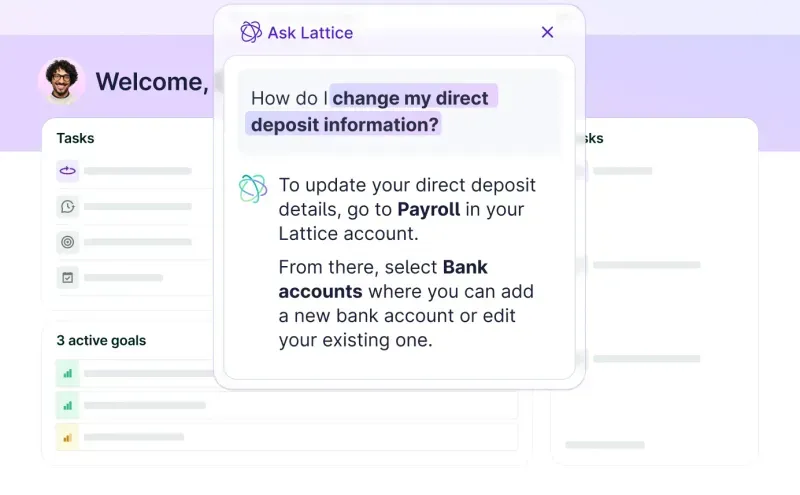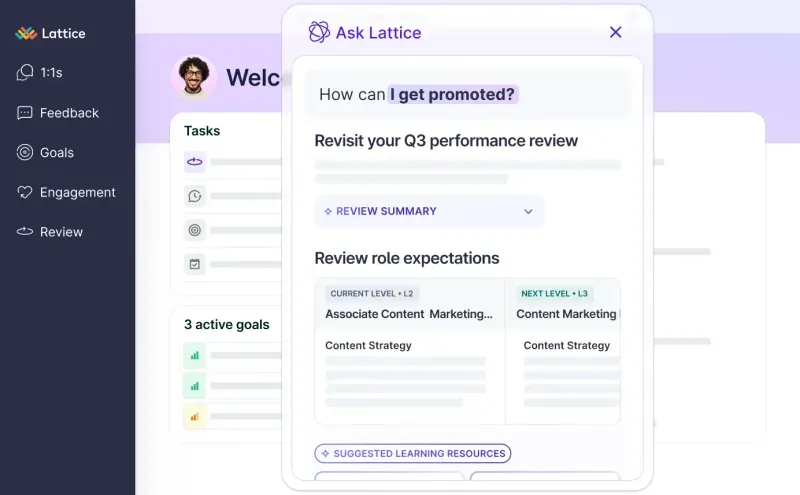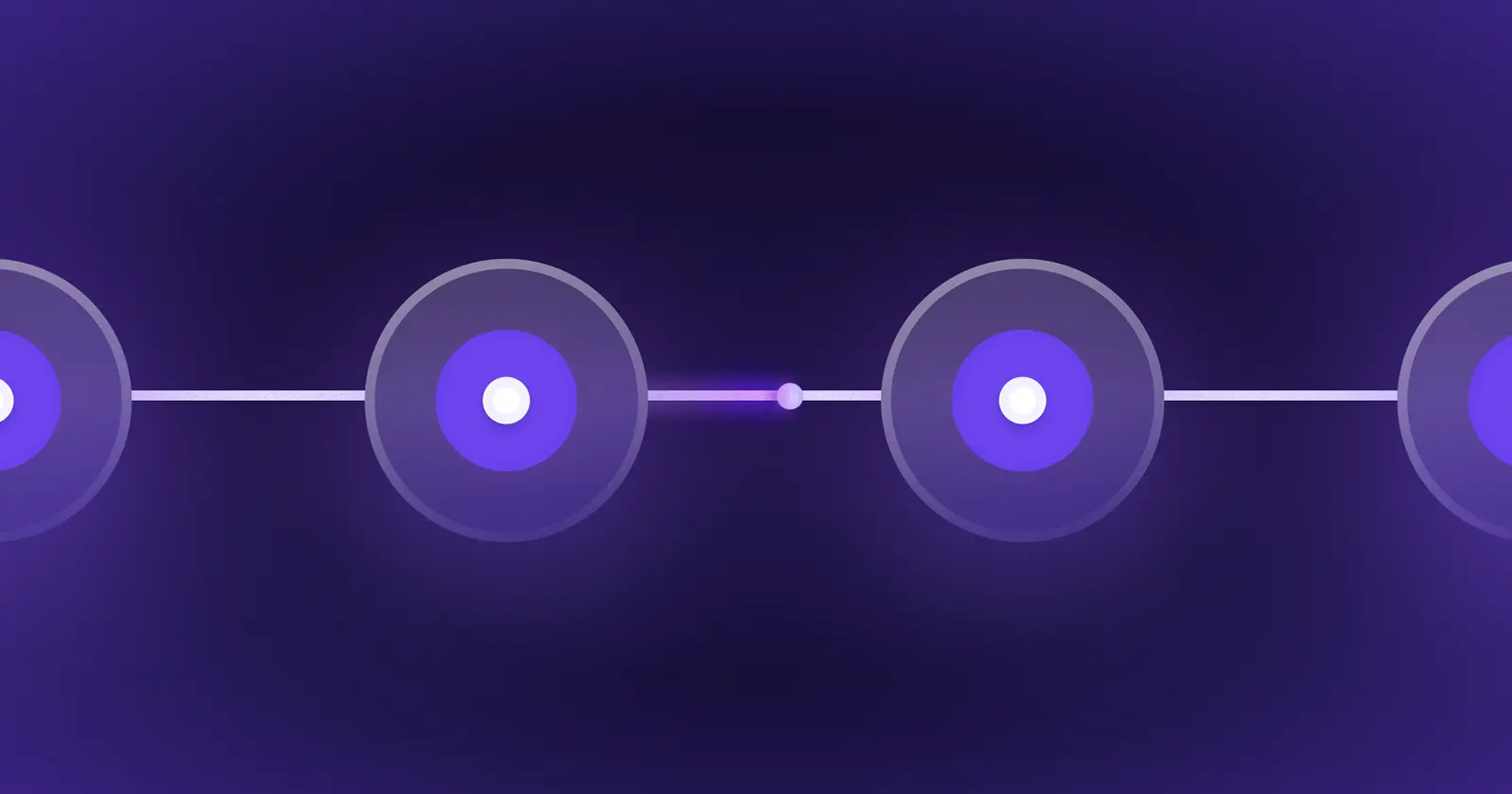Ever wish you could clone yourself? Or that your company would finally give you headcount and free you from a never-ending spiral of overwhelm? (No need to shout, HR, we already know the answer is yes.)
Meet Agentic AI: Systems that don’t just answer questions but can observe, reason, and act on behalf of HR leaders and managers.
Agentic AI is already reshaping HR workflows, from policy lookups and coaching prompts to performance reviews and one-on-one summaries. Yet adoption is uneven, and leaders are grappling with budget pressures and ethical hesitations. Let’s dive into the latest AI innovation that is helping HR teams actually do more with less.
{{rich-takeaway}}
What Agentic AI Actually Means
To understand why agentic AI feels different, contrast it with the chatbots you’ve seen before. A chatbot can answer a question like, “What’s our parental leave policy?” but it stops there. Agentic AI goes further. It identifies the employee’s location, pulls the relevant policy, applies rules based on tenure, and can even trigger a workflow to update payroll records or notify a manager of the request.
The whole idea [is] that it creates more space for humans to get out of the drudgery and into the genius zone.
Agentic AI can live in nearly every corner of the HR ecosystem. It can sit inside performance management systems to draft feedback summaries, inside engagement platforms to generate team action plans, or inside HRIS databases to complete forms and check compliance. It is autonomous and goal-driven, designed to inform and execute tasks, trigger actions, and learn from outcomes.
Valentina Gissin, chief people officer at Curana Health, captured the appeal succinctly. “The whole idea for me about AI in the workplace is the excitement that it creates more space for humans to get out of the drudgery and into the genius zone,” she said. For her, the promise isn’t replacing the uniquely human work of coaching or judgment, but eliminating the administrative weight that keeps HR and employees from focusing on what matters most.
Agent Adoption: Uneven but Rising
Lattice’s 2026 State of People Strategy Report shows that more than half of HR teams are experiencing pressure to cut back on tech. Yet even under that financial pressure, a quarter (25%) are still prioritizing HR tech upgrades this year. That's a clear sign that leaders see the long-term risk of standing still.
Still, confusion persists. Lattice's research also found that over a third of white-collar HR leaders are unfamiliar with agentic AI, while another 21% know what it is but haven’t tried it yet. Adoption also varies significantly by geography. According to Lattice’s research, 45% of European HR teams use agentic AI compared to just 28% of US teams.
That lack of familiarity mirrors what many leaders are experiencing on the ground: cultural hesitation, uneven experimentation, and plenty of trial-and-error learning.
Emily Aponte, senior vice president of human resources at BSE Global, described the dynamic candidly. “Don’t be afraid to say, ‘Hey, I dumped this into an AI agent and here's what it gave me. Own it. We have these tools for a reason. It’s okay to use them.”
Where Agentic AI Is Already Delivering Value
Unlike artificial general intelligence (AGI), agentic AI isn’t a hypothetical or futuristic concept. The technology is already very real and is being used. The use cases aren’t abstract or niche, either: HR leaders shared practical use cases that save their teams time daily.
Always-On Employee Support
One of the easiest wins is the HR helpdesk. At BSE Global, Aponte’s team is rolling out a Q&A agent to answer frequent employee questions about PTO, policies, and benefits. For a small HR team, the time savings are significant. “We’re just getting it off the ground,” she said, “but already it’s taking some of the day-to-day load off our plate.”

Curana Health has deployed a policy bot that answers common employee questions instantly. Gissin noted the effect is straightforward but powerful: fewer repetitive queries for HR staff, more consistent responses for employees. Lattice’s AI Helpdesk Agent uses your existing HR documentation and syncs with your knowledge management systems to deliver accurate answers tailored to each employee.
Real-Time Candidate Support
Job candidates often ask nuanced, high-stakes questions during interviews — about immigration policies, local compensation ranges, or job tiering. Internally at Lattice, recruiters now have a dedicated AI hub to surface accurate, real-time answers without breaking the flow of conversation.
For Slaton, the impact goes beyond efficiency. “Instead of having to click around and say, ‘hold on, let me find that information,’ recruiters are getting it within seconds,” she explained. “It makes the candidate experience better and ensures we’re consistent.”
Proactive Insights for Managers
Managers often struggle to spot performance or engagement risks until it’s too late. That’s where proactive AI support can change the game. Lattice’s Proactive Insights feature monitors signals like feedback frequency, workload balance, and engagement dips, then nudges managers to act.

AI agents can offer managers proactive insights, suggested next steps, or feedback and advice. However, HR leaders recommend against handing the controls entirely to AI in high-stakes situations. Keep things human, especially when it comes to sensitive issues.
“Leave room for human judgment…AI is, at best, a GPS in those situations. And just like you wouldn't let your GPS drive you off a cliff, you don't follow an AI recommendation to do something that contradicts your own strong managerial judgment,” Gissin said.
Real-Time Coaching and Interview Training
Agentic AI is also entering the domain of coaching and employee growth. Lattice’s AI Coach provides context-aware guidance, drawing from performance data to help managers prepare for conversations or employees plan their own development.

Gissin experimented with similar functionality in a past role, designing an interview training agent to scale a bespoke hiring process. “We had a very bespoke interview process…So instead of me literally spending time with everyone, we designed an AI coach, vetted these deep structured prompts, and then trained it,” she recalled. “That was incredibly useful.”
For fast-growing companies, use cases like these can save hours of manual shadowing and ensure consistent evaluation standards across hiring teams.
Onboarding Agents
Klue's VP of people, Alexis MacDonald, noticed AI innovation bubbling up organically. A sales enablement employee built an entire AI-driven onboarding flow for new SDRs on the side of their desk. It impressed leadership enough to create a formal “AI operations” role reporting into HR.
The new hire is now mapping processes across the company to identify where AI agents can deliver efficiency gains. “It’s about creating ease with AI where we don’t already have it,” MacDonald said. “Technical teams lean in naturally, but other functions need more support.”
Turning Survey Analysis Into Action
Survey feedback is another area ripe for agentic AI's help. At BSE Global, Aponte’s team recently received 70-plus pages of open-ended comments from an engagement survey. Instead of manually parsing through the data, they used AI to cluster themes, quantify common words, and generate a two-page executive summary.

“It condensed it into something leaders could act on immediately,” she said. “Instead of spending weeks tagging comments in Excel, we were able to say, here are the four big things employees are talking about, and here’s what we’re doing about them.”
Responsible AI: Governance and Guardrails
As promising as AI agents may be, leaders emphasized the importance of governance. Six in ten HR leaders express significant ethical concerns about AI, according to Lattice’s State of People Strategy Report, and with good reason: HR systems handle sensitive employee data, where bias, privacy breaches, or unchecked automation can carry serious consequences.
For Gissin, though, compliance may be an opportunity as much as a risk. “When we transitioned from health records on paper to health records in electronic form, people got really nervous that compliance was going to be a disaster, but the reality is compliance got better,” she said. “Once you understand and build in compliance as a feature, it reduces human error.”
HR teams must prioritize clear boundaries. Data privacy and access controls are non-negotiable. Audit trails of agent actions provide accountability. And above all, be transparent about what AI can (and cannot) do.
MacDonald framed the responsibility simply: “At the decision-making point, the human has to step in. High-stakes workflows — compensation, performance ratings, executive onboarding — always require human judgment.”
Getting Started: A Practical Playbook
For HR leaders looking to take their first steps with agentic AI, the advice is consistent: start small. Pick one or two high-volume, low-risk use cases — such as recruiter hubs, HR helpdesk questions, or one-on-one summaries — that deliver visible value.
Prepare the data carefully. Centralize policies and documents so the AI draws from an accurate “source of truth.” Define clear approvals: which tasks can AI complete autonomously, and which require human sign-off?
Measure results against meaningful goals, not just hours saved. Did recruiters answer candidate questions faster? Did managers intervene earlier with struggling employees? Did performance review participation increase?
And finally, invest in change management. Both BSE Global and Klue have identified “AI champions” — employees who test tools, share best practices, and normalize safe experimentation. For Aponte, these committees are a way to “bring people along on the journey instead of dumping a bunch of new systems on everyone.”
For more advice on implementing AI, read Lattice's No Regrets Playbook.
Proving ROI: Beyond Hours Saved
Quantifying the impact of AI is still a challenge, but leaders are learning where to focus. At BSE Global, the metric was a jump in performance review participation, from past struggles to 96% completion after enabling AI writing assist. At Lattice, early recruiter and helpdesk bots reduced employee inquiries significantly, though Slaton emphasized the importance of balancing automation with human escalation.
As MacDonald cautioned, simplistic metrics can mislead. “Hours saved alone is not a great measurement,” she said. “If satisfaction scores are low, you haven’t made any impact.”
The goal isn’t just efficiency, it’s improving the quality of work, speeding interventions, and enabling HR to focus on strategy rather than paperwork. All outcomes worth getting excited about. Indeed, Lattice research shows that high-performing HR teams (those exceeding their goals) express far more excitement about AI (52%) than low-performing peers (32%).
From Experimentation to Everyday Impact
Agentic AI is no longer theoretical. It is already helping recruiters answer candidate questions in real time, analyzing surveys into executive briefings, nudging managers to act sooner, training interviewers, and guiding employees through onboarding. The technology is still young, but the trajectory is unmistakable: in the hands of thoughtful HR leaders, agentic AI is becoming an everyday partner.
The challenge now is not just adoption, but adoption done responsibly — with clear guardrails, meaningful metrics, and an unwavering focus on the human side of work.
{{rich-highlight-2}}
✨ Disclaimer: This content was developed with the help of artificial intelligence, though reviewed, edited, and approved by (real) humans.
Save time to focus on what matters.
Explore how Lattice’s AI Agent can streamline HR operations, empower managers, and support growth conversations.
Key Takeaways
- Agentic AI goes beyond chatbots, helping HR teams execute tasks and trigger workflows — not just answer questions.
- HR leaders are experimenting with use cases like proactive manager nudges, interview training, policy lookups, and survey analysis.
- Adoption remains uneven: 26% of HR teams are unfamiliar with agentic AI, and U.S. adoption lags behind Europe (28% vs. 45%).
- High-performing HR teams are far more enthusiastic about AI than low-performing peers (52% vs. 32%).
- Responsible rollout requires clean data, clear guardrails, and change management.








